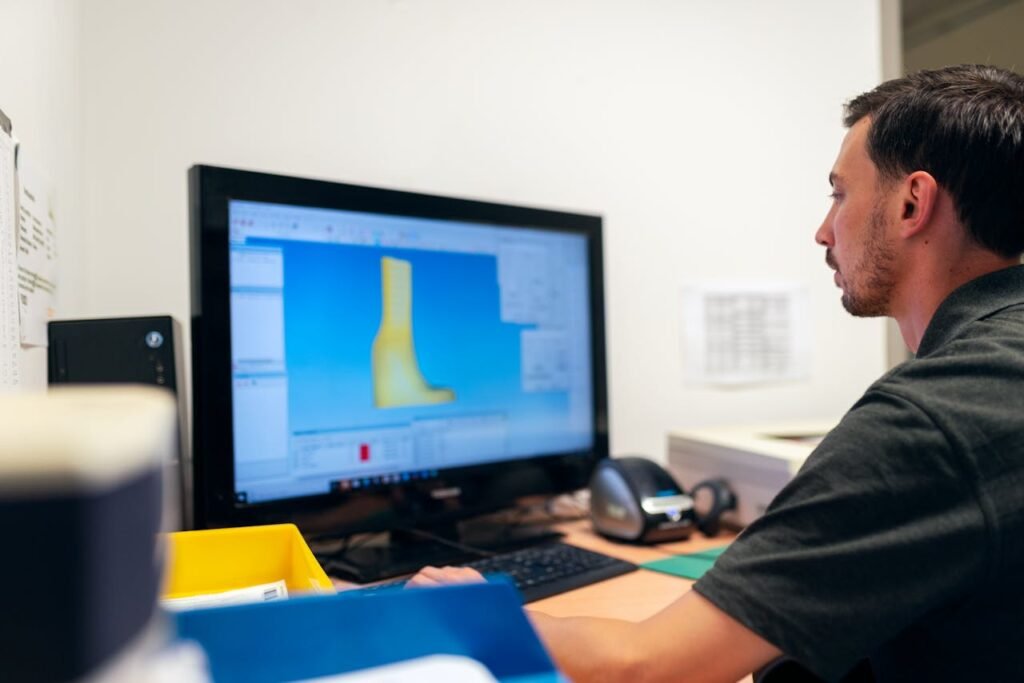Choosing a prosthetic limb is a significant decision, one that can shape your daily life, mobility, and overall confidence. The process is deeply personal, and having the right guidance makes all the difference. A prosthetist is your most valuable resource during this journey. Their expertise and recommendations will guide you toward a prosthetic limb that aligns with your unique needs and goals.
But to get the most out of your consultation, it’s essential to ask the right questions. Understanding the key aspects of prosthetic options, fit, maintenance, and functionality will empower you to make an informed choice. This article explores the top questions to discuss with your prosthetist, ensuring you leave no stone unturned in finding the perfect prosthetic.
Understanding Your Options: The Starting Point
The first step in your consultation is understanding the prosthetic options available to you. Prosthetics come in a wide range of designs, each tailored to specific needs, lifestyles, and budgets. By asking detailed questions about these options, you can gain a clearer picture of what will work best for you.
What Types of Prosthetics Are Available?
Prosthetists often begin by explaining the types of prosthetics suited to your situation. This discussion typically includes mechanical, myoelectric, and hybrid models, each with distinct features and benefits. Asking for a detailed comparison helps you weigh the pros and cons of each type in the context of your daily life.
For instance, if you’re looking for a device that prioritizes simplicity and durability, your prosthetist might recommend a mechanical limb. Alternatively, if precision and adaptability are your primary goals, a myoelectric model may be a better fit. Exploring these options ensures you start with a solid foundation for decision-making.
How Will This Prosthetic Fit My Lifestyle?
Every individual’s lifestyle is different, and the best prosthetic for you will depend on how you plan to use it. Discussing your daily activities, hobbies, and long-term goals with your prosthetist will help them identify devices that align with your needs.
For example, if you’re an active person who enjoys running or sports, your prosthetist might suggest a prosthetic designed for high performance and impact resistance.
If you need a prosthetic for professional tasks or creative pursuits, they may recommend a device with advanced grip control or fine motor capabilities.
By focusing on your lifestyle, your prosthetist can narrow down the options and tailor their recommendations to your unique circumstances.
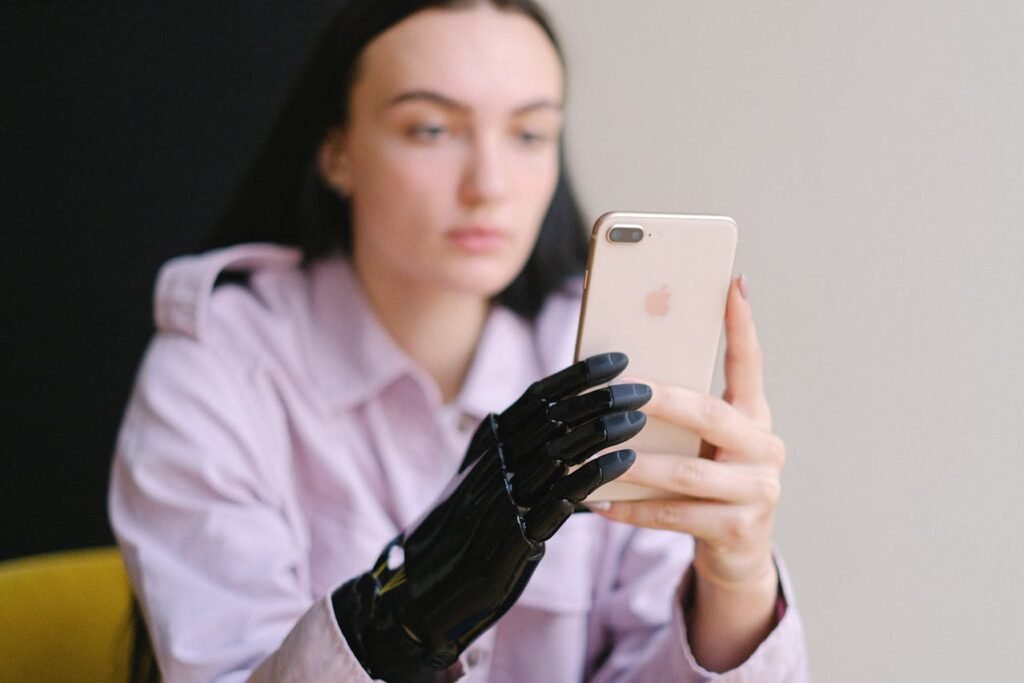
Fit and Comfort: The Foundation of Usability
No matter how advanced or feature-rich a prosthetic limb is, its effectiveness ultimately depends on how well it fits and feels. A proper fit is essential for comfort, functionality, and long-term usability, making it a crucial topic to discuss with your prosthetist.
How Will the Prosthetic Be Fitted?
Understanding the fitting process is key to ensuring your prosthetic feels like a natural extension of your body. Ask your prosthetist about the techniques they use to create a custom fit, such as 3D scanning or traditional casting.
These methods are designed to capture the unique shape and contours of your residual limb, resulting in a socket that provides both stability and comfort.
You should also discuss the role of test sockets in the fitting process. These temporary sockets allow you to test the fit and make adjustments before the final prosthetic is fabricated. This iterative approach ensures the final product meets your expectations.
What Should I Expect in Terms of Comfort?
Comfort is subjective and can vary depending on the design and materials used in your prosthetic. Asking your prosthetist what level of comfort you can expect—and how it might evolve as you adapt—sets realistic expectations for your journey.
For example, some initial discomfort is normal as your body adjusts to the prosthetic. However, persistent pain or irritation should not be ignored. Your prosthetist can provide tips for managing these challenges and make adjustments to improve comfort over time.
The Importance of a Precise Fit
A properly fitted prosthetic limb should feel like an extension of the user’s body. This means that the socket, which connects the residual limb to the prosthetic, must be customized with precision.
A poorly fitting socket can cause pressure points, skin irritation, and even long-term issues such as nerve pain or sores. On the other hand, a well-fitted socket provides stability, reduces fatigue, and allows for seamless movement.
Businesses must prioritize the use of advanced fitting technologies to ensure precision. For instance, 3D scanning and digital modeling can create a highly accurate representation of the residual limb, allowing for sockets that conform perfectly to the user’s anatomy.
Offering these technologies as standard practice can set a business apart by emphasizing its commitment to comfort and quality.
Adapting to Dynamic Needs
Fit is not a one-time achievement—it evolves over time. As users adapt to their prosthetic limb, their residual limb may change in size or shape due to factors like swelling, weight fluctuations, or muscle growth. Regular check-ins with a prosthetist ensure that the socket and overall fit remain comfortable and functional.
Businesses can create value by offering maintenance packages that include periodic refitting and socket adjustments. These packages demonstrate a long-term commitment to the user’s well-being and make it easier for users to access ongoing care.
Maintenance and Longevity: Ensuring Long-Term Satisfaction
A prosthetic limb is a long-term investment, and understanding how to care for it is essential for maximizing its lifespan and functionality. Discussing maintenance and durability with your prosthetist ensures you’re prepared to keep your device in optimal condition.
How Long Can I Expect the Prosthetic to Last?
Prosthetic limbs are built to be durable, but their lifespan depends on factors such as materials, usage, and maintenance. Asking your prosthetist about the expected lifespan of your chosen device provides clarity on when you might need repairs, replacements, or upgrades.
For example, a mechanical prosthetic may last several years with minimal upkeep, while advanced myoelectric models might require more frequent servicing due to their electronic components. Your prosthetist can help you plan for these eventualities, ensuring you’re always prepared for the future.
What Maintenance Will Be Required?
Prosthetic limbs require regular maintenance to ensure they function smoothly and safely. Discussing the specifics of maintenance with your prosthetist helps you understand what’s involved and how often it will need to be done.
For instance, you might need to clean the socket regularly to prevent skin irritation, check moving parts for wear and tear, or replace batteries in an electronic device.
Your prosthetist can provide detailed guidance on these tasks, as well as recommend products and tools to simplify the process.
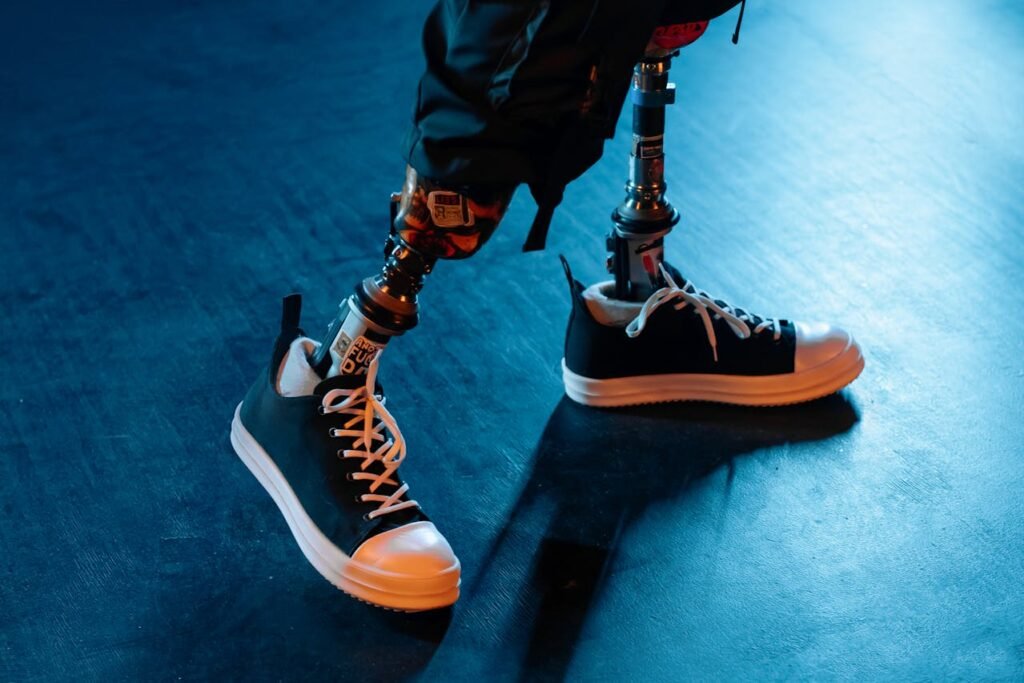
Are Maintenance Services Available?
Many prosthetists offer maintenance and repair services as part of their practice. Asking about these services—and whether they are included in your initial cost or billed separately—ensures you know where to turn if issues arise.
For example, your prosthetist might offer routine check-ups to adjust the fit or calibrate electronic components, helping you avoid larger problems down the line. Knowing you have access to expert support provides peace of mind and reinforces your confidence in the device.
Advanced Features and Customization: Personalizing Your Prosthetic
Modern prosthetics offer a wide range of features and customization options that enhance both functionality and aesthetics. Asking about these possibilities helps you create a prosthetic limb that feels uniquely yours.
What Advanced Features Are Available?
If you’re considering a high-tech prosthetic, ask your prosthetist about advanced features such as adaptive grip patterns, sensory feedback, or smart connectivity. These technologies can significantly enhance your experience, making tasks easier and more intuitive.
For example, a prosthetic hand with sensory feedback might allow you to feel the pressure of your grip, while a smart prosthetic leg could adjust its resistance automatically when climbing stairs. Understanding these options ensures you select features that align with your needs and preferences.
Can the Prosthetic Be Customized?
Customization allows you to tailor your prosthetic limb to your lifestyle and personal style. Ask your prosthetist about options for functional and aesthetic customization, such as modular components, specialized tools, or artistic designs.
For instance, you might choose a terminal device optimized for a specific activity, such as playing sports or using tools. Alternatively, you could select a cover with a color, pattern, or texture that reflects your personality. Customization not only enhances usability but also fosters a sense of ownership and pride in your prosthetic.
Costs and Financial Considerations: Planning for Affordability
Understanding the financial aspects of choosing a prosthetic limb is crucial for making an informed decision. Openly discussing costs and available resources with your prosthetist helps you navigate this aspect of the process confidently.
What Are the Costs Involved?
The cost of a prosthetic limb varies depending on its type, materials, and features. Your prosthetist can provide a detailed breakdown of these costs, including the initial fitting, fabrication, and any additional components or services.
For example, a mechanical prosthetic may be more affordable upfront but require fewer upgrades over time, while an advanced myoelectric model might have a higher initial cost but include more built-in functionality. Understanding these differences helps you plan your budget effectively.

Are There Financing or Assistance Options?
If affordability is a concern, ask your prosthetist about financing plans or financial assistance programs. Many providers offer flexible payment options or work with organizations that provide grants or subsidies for prosthetic users.
Additionally, discussing insurance coverage ensures you understand what expenses will be reimbursed and what out-of-pocket costs you might incur. Your prosthetist may also assist with navigating the claims process, making it easier to access the resources you need.
Rehabilitation and Adaptation: Preparing for Success
Adapting to a prosthetic limb involves more than just physical adjustments—it’s a journey of building confidence, mastering skills, and integrating the device into your daily life. Discussing the rehabilitation process with your prosthetist ensures you’re equipped with the knowledge and resources to succeed.
What Rehabilitation Support Is Available?
Rehabilitation is a critical part of adapting to a prosthetic limb, and your prosthetist plays a key role in coordinating this process. Ask about the types of rehabilitation services available, such as physical therapy, occupational therapy, or virtual training programs.
For instance, physical therapy might focus on improving your balance, gait, or strength, while occupational therapy helps you master specific tasks like dressing, cooking, or typing. Understanding what support is available ensures you can build a well-rounded plan for recovery.
Your prosthetist may also work closely with therapists to create a cohesive approach to rehabilitation, ensuring your prosthetic is integrated seamlessly into your therapy sessions.
How Long Will It Take to Adapt?
Every individual’s adaptation timeline is different, influenced by factors such as the complexity of the prosthetic, your activity level, and your personal goals. Discussing this timeline with your prosthetist helps set realistic expectations and reduces frustration.
For example, learning to walk with a prosthetic leg might take a few weeks of consistent practice, while mastering a myoelectric arm for tasks requiring fine motor skills could take several months. Your prosthetist can provide a clear picture of what to expect and offer encouragement as you progress.
Are There Tools or Resources to Aid Adaptation?
Modern technology has introduced innovative tools to support prosthetic adaptation, from virtual reality training programs to mobile apps that provide step-by-step guidance. Ask your prosthetist if these resources are available and how they can enhance your rehabilitation experience.
For instance, a VR program might simulate real-world environments, allowing you to practice using your prosthetic in scenarios like walking on uneven terrain or navigating crowded spaces.
Apps can offer personalized tips, track your progress, and provide motivational support. These tools make the adaptation process more engaging and effective.
Emotional and Social Considerations: Building Confidence
Adjusting to a prosthetic limb is not just a physical journey—it’s also an emotional and social one. Discussing these aspects with your prosthetist ensures you have the support needed to navigate challenges and celebrate milestones.
How Can I Address Emotional Challenges?
It’s natural to experience a range of emotions as you adapt to a prosthetic limb, from excitement and hope to frustration or self-doubt. Your prosthetist can provide valuable advice for managing these feelings and connecting with resources for emotional support.
For example, they might recommend joining peer support groups where you can share experiences and learn from others who have faced similar challenges. Counseling or therapy services can also help you process your emotions and build resilience.
By addressing the emotional aspects of your journey, you can strengthen your confidence and embrace your new capabilities with a positive outlook.
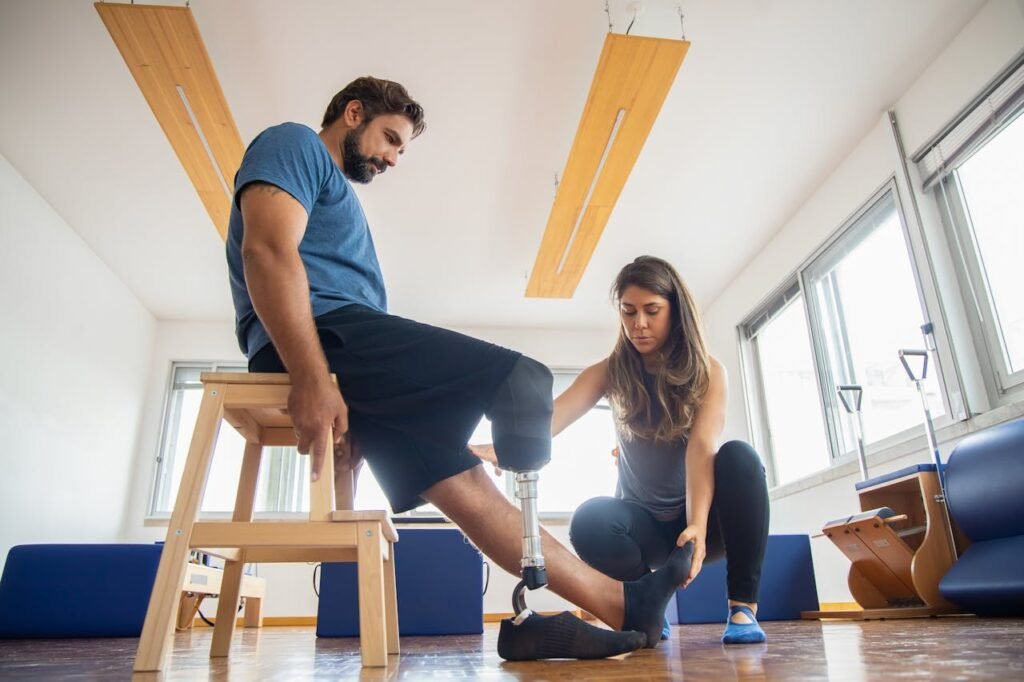
What Support Is Available for Social Integration?
For many individuals, reintegrating into social and professional settings is a significant part of the prosthetic journey. Discussing strategies for social adaptation with your prosthetist helps you approach these situations with confidence.
For instance, your prosthetist might suggest practicing specific scenarios, such as introducing yourself to new colleagues or navigating public spaces, to build your comfort level. They may also recommend prosthetics with natural aesthetics or advanced features that enhance your ability to participate in group activities seamlessly.
Fostering a sense of normalcy and inclusion is key to rebuilding independence and maintaining a fulfilling social life.
Staying Connected for Long-Term Success
The relationship with your prosthetist doesn’t end once you’ve selected your prosthetic limb. Ongoing communication and support are essential for maintaining and optimizing your device over time.
How Often Should I Schedule Follow-Ups?
Regular follow-up appointments allow your prosthetist to monitor your progress, address any concerns, and make adjustments as needed. Ask how frequently these appointments should be scheduled and what they will entail.
For example, initial follow-ups might focus on ensuring the socket fits comfortably and the device is functioning as intended. Over time, these visits may shift to address maintenance, upgrades, or changes in your activity level.
Maintaining this relationship ensures your prosthetic continues to meet your evolving needs.
What If My Needs Change?
Your goals, lifestyle, and physical condition may change over time, and it’s important to discuss how your prosthetic can adapt to these changes.
Your prosthetist can guide you through options such as upgrading to a more advanced model, replacing worn components, or transitioning to a different type of prosthetic.
Prosthetic technology is constantly evolving, and staying connected with your prosthetist ensures you can take advantage of new innovations that enhance your experience.
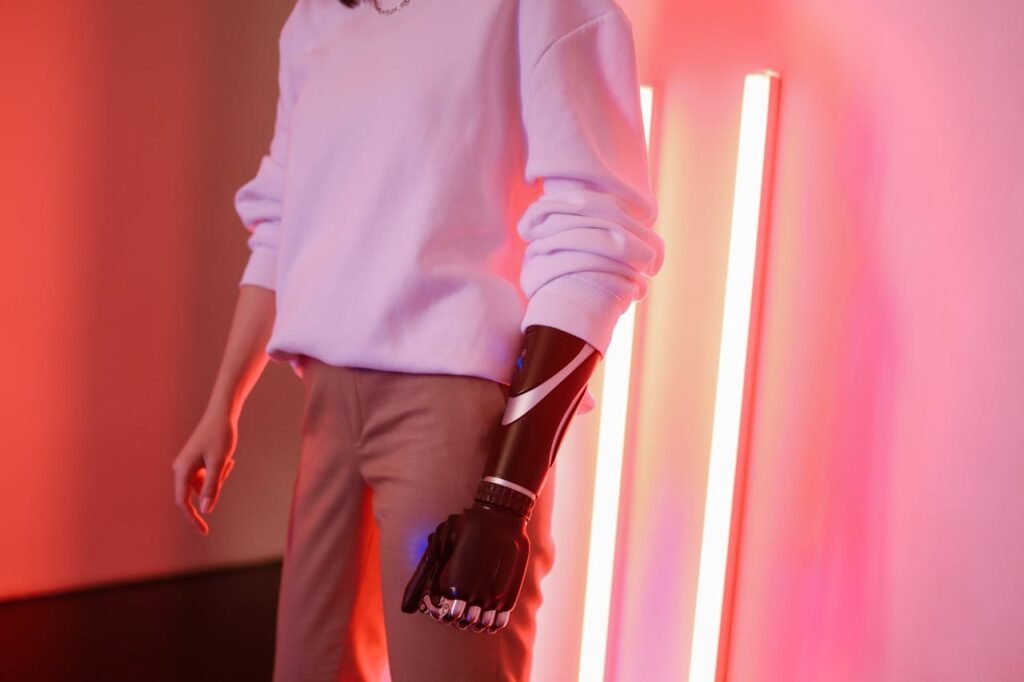
Taking the Next Steps: Building a Future of Empowerment
The journey of selecting and adapting to a prosthetic limb is one that combines personal growth, technological innovation, and meaningful collaboration. The questions you ask your prosthetist serve as the foundation for this journey, helping you gain clarity, confidence, and control over your choices. However, the process doesn’t end once the prosthetic is chosen—it’s an ongoing partnership that evolves as your needs and goals change.
Embracing a Lifelong Partnership
Your relationship with your prosthetist is much more than a transactional one; it’s a lifelong partnership centered on your well-being and success. As you adapt to your prosthetic limb, staying in touch with your prosthetist ensures you’re always supported.
For example, as you achieve new milestones, your prosthetist can suggest adjustments or upgrades to help you reach even greater heights. If challenges arise, their expertise can provide solutions that keep you on track.
This ongoing dialogue ensures that your prosthetic limb evolves alongside you, continuing to meet your needs at every stage.
Advocating for Yourself
As a prosthetic user, your voice is powerful. By asking thoughtful questions and communicating openly with your prosthetist, you advocate for your own needs and preferences. This advocacy ensures that every aspect of your prosthetic—from functionality to aesthetics—aligns with your vision for the future.
Your insights and experiences can also contribute to the broader prosthetics community. Sharing your feedback with your prosthetist and peers helps drive improvements in prosthetic design, rehabilitation techniques, and support services.
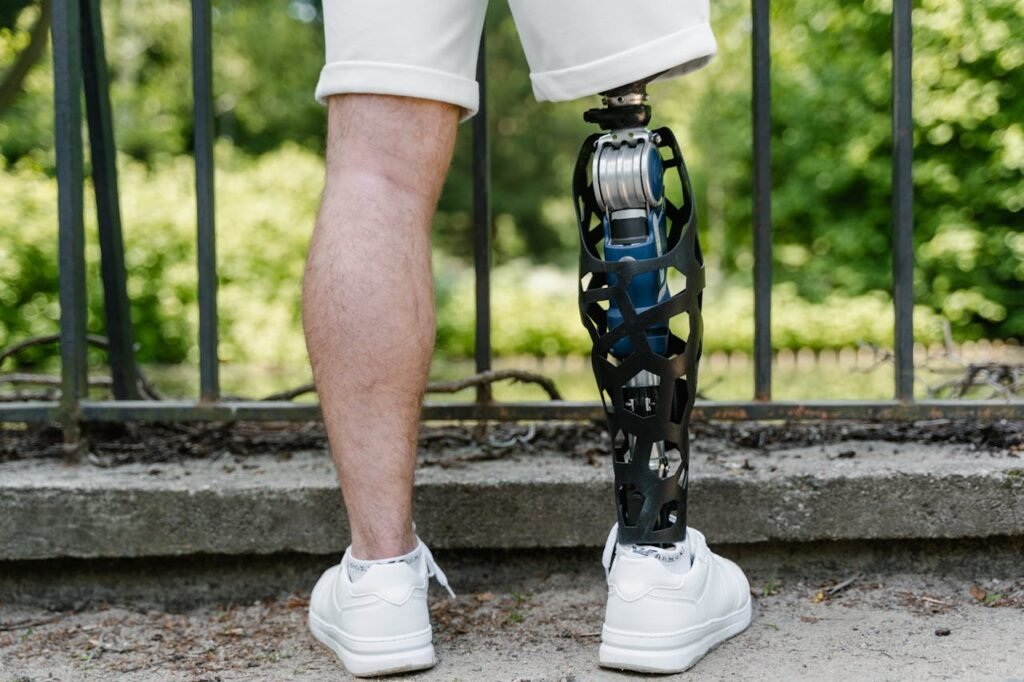
Celebrating Progress and Potential
Selecting a prosthetic limb marks the beginning of a new chapter in your life. It’s a decision that opens doors to independence, self-expression, and a renewed sense of purpose.
Whether you’re taking your first steps with a prosthetic leg, mastering a new skill with a prosthetic arm, or embracing advanced technology to enhance your mobility, each milestone is worth celebrating.
For businesses, supporting users in their journey is both a responsibility and an opportunity. By fostering a user-centered approach, embracing innovation, and building lasting relationships, prosthetic providers can make a meaningful impact that extends far beyond the devices they create.
A Future of Possibilities
The future of prosthetics is one of limitless possibilities. Advances in technology, materials, and design are continually redefining what prosthetic limbs can achieve.
As a user, staying informed about these advancements empowers you to make choices that align with your evolving needs and aspirations.
For businesses, embracing these innovations is a chance to lead the industry and improve the lives of countless individuals. By investing in research, listening to users, and fostering inclusivity, prosthetic providers can shape a world where mobility, independence, and confidence are accessible to all.
In the end, the journey of choosing a prosthetic limb is about more than finding the right device—it’s about creating a foundation for a life filled with strength, resilience, and possibility.
The questions you ask today will guide the decisions you make tomorrow, helping you build a future that is truly your own.
Conclusion
Selecting a prosthetic limb is a complex and deeply personal decision, but asking the right questions can make the process more manageable and empowering. From understanding your options and ensuring a proper fit to planning for maintenance and addressing emotional challenges, your prosthetist is your most valuable partner in this journey.
For businesses, supporting users through these conversations is an opportunity to demonstrate expertise, empathy, and a commitment to their well-being. By providing clear answers, personalized guidance, and ongoing support, prosthetic providers can build lasting relationships and foster user satisfaction.
The questions you ask your prosthetist are not just about finding the right device—they’re about building the confidence, knowledge, and support needed to embrace life with a prosthetic limb. With the right approach, this process becomes a gateway to independence, resilience, and new possibilities.



